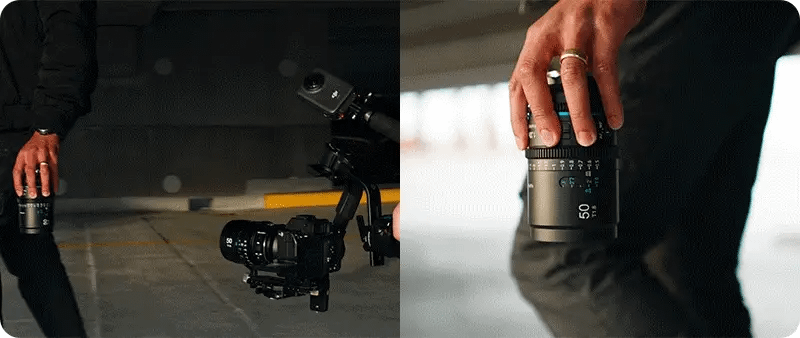Resurrection Season: Kill Bill, Christ & the Cloud
Tarantino revives Kill Bill, Malick resurrects his Christ, and Hollywood continues to its rebuild.
This week Quentin Tarantino revealed he’s stitching Kill Bill back into a four-hour blood opera. Wong Kar-wai is swapping film reels for 30 episodes of ’90s Shanghai nostalgia. And Terrence Malick is still somewhere in an editing room, lost in a fog of faith and 3,000 hours of footage.
While new auteurs build empires in television and tech, the old guard is still chasing ghosts of perfection.
The machines, meanwhile, are learning how to make movies faster than humans can finish theirs.
Render Reel
Kill Bill: The Whole Bloody Affair gets full theatrical trailer Quentin Tarantino fuses Vol. 1 and 2 into a four-hour unrated cut with a new anime sequence, out Dec 5.
Michael Jackson biopic trailer shatters records First teaser pulls 30M views in six hours, spotlighting Jaafar Jackson and reigniting the tone debate.
Blossoms Shanghai marks Wong Kar-wai’s TV leap The auteur debuts a 30-episode series set in ’90s Shanghai for international release.
Godzilla Minus Zero officially announced Toho confirms Takashi Yamazaki’s return for the sequel to Minus One, targeting late 2026.
China shutters New York indie film festival Authorities allegedly pressured diaspora filmmakers to withdraw, forcing cancellation.
The Great Hollywood Reboot
Walk through any Hollywood lot today and you’ll see the signs of an industry in transition. Smaller crews, hybrid writers’ rooms, and post-teams syncing in from thousands of miles away via the cloud.
The old Hollywood monopoly is certainly cracking, but maybe, globally, that’s not a tragedy.
Over the past three years, Los Angeles has shed over 41,000 film and TV jobs which is a quarter of its entertainment workforce. But what looks like loss in one ZIP code is growth everywhere else. The means of production have gone global.
The New Hollywood of the ’60s and ’70s was born from rebellion; filmmakers tearing up the rulebook, turning LA into the unquestioned mecca of movies.
But this new, New Hollywood won’t even live in Hollywood at all.
It’ll live in Seoul, Mumbai, Lagos, Dubai, and São Paulo.
Or wherever talent, tech, and audiences now converge. The center of gravity has shifted, and it’s no longer anchored to a single patch of California sun.
That shift shows up in the numbers too. In 1980, Los Angeles County held roughly 63% of all U.S. film and TV jobs. By 2023, that share had fallen to 27%.
Hollywood’s acting like an aging movie star. Still famous, still photogenic, but struggling to accept that it’s no longer the only lead. The industry’s next close-up belongs to wherever embraces that creativity has no inherent geographic monopoly and will use whatever tools to make the best stories possible.
Aputure launches free Sidus Link Pro plan Full Bluetooth lighting control now free for indies.
Blackmagic Camera for iOS 3.2 adds live streaming Native SRT/RTMP output lets iPhones stream directly to YouTube/Twitch.
Movie car museum liquidates 50 iconic screen vehicles at no reserve From Back to the Future to John Wick, Pop Central Museum ditches the usual museum model.
Imagine × Obsidian and the New Architecture of Hollywood
Obsidian, a new production company from director Wes Walker and producer Louis Gheysens, has partnered with Ron Howard and Brian Grazer’s Imagine Entertainment to build one of Hollywood’s first studios structured entirely around AI-assisted production.
Rather than chasing automation, Obsidian is re-engineering the process itself: organizing compact, director-led pods that blend storyboard artists, CG generalists, editors, and AI specialists to move projects from sketch to screen in weeks instead of months.
Its proprietary tools, including DigitalForge, a real-time collaborative engine, and EchoChrome, a high-end rendering platform, bring AI and CGI directly onto the set instead of leaving them buried in post.
Veteran artists like Marc Vena (Logan, War for the Planet of the Apes) and Tani Kunitake (The Matrix, Black Panther) are helping train Obsidian’s custom datasets to emulate human cinematography rather than machine imitation.
For Imagine, the partnership extends through development, pre-vis, and post-production.
Terrence Malick’s The Way of the Wind : The Unfinished Gospel
Malick’s reputation for obsessive, years-long filmmaking is well documented.
Days of Heaven (1978) was shot almost entirely during “magic hour,” stretching production to 15 months and post to two years. Two decades later, The Thin Red Line (1998) produced over a million feet of film and took 20 months to edit, with Adrien’s Brody’s “star” role being cut from the film almost entirely.
The Tree of Life (2011) blended Texas family drama with cosmic VFX sequences, requiring three years of post and hundreds of different versions.
And between 2010 and 2012, Malick shot To the Wonder, Knight of Cups, and Song to Song back-to-back, amassing several millions of feet of film and yet again reduced certain major actors to cameos.
However, Malick’s biblical epic The Way of the Wind that was shot in 2019, has reportedly now accumulated over 3,000 hours of footage, and sadly may never see the light of day.
Even by Malick standards, it’s audacious.
Now 81, the director shows no urgency to finish what’s become one of cinema’s longest ghost stories. Rumored premieres have come and gone (Cannes 2025 was the latest mirage), and today this once high-profile, star-packed epic has slipped entirely off the radar.
Funded primarily by Germany’s Studio Babelsberg, The Way of the Wind drew an eclectic, international cast, Mark Rylance, Joseph Fiennes, Matthias Schoenaerts, Ben Kingsley, and Leila Hatami among them.
Rylance, rumoured to play several incarnations of Satan, recalled the experience with a kind of reverent disbelief: no rehearsals, just a 28-page monologue delivered opposite a mostly silent Jesus. He’s hopeful the wait will prove worth it, though others have lost patience.
Actor Franz Rogowski, who worked with Malick on A Hidden Life, described the film simply as “missing in action,”.
Even if Malick does end up finishing he’ll have to contend with not one, but two upcoming Jesus’ films already set for release.
Mel Gibson, resurfacing after years of controversy, is attempting to resurrect his career with The Resurrection of the Christ: Parts One and Two, slated for 2027. Gibson’s project follows the descent into Hell and the resurrection which is ground that closely mirrors Malick’s own biblical vision.
Whatever frustrations surround Malick’s process, he’s still one of the few American directors chasing the sacred through cinema.
His film may yet prove to be the most quietly radical Gospel ever made, unless, in true Malick fashion, its saviour never makes it to the final cut.
AI reshapes YouTube’s next era Generative tools for editing, dubbing and music creation arrive alongside a crackdown on AI spam.
Snapchat adds AI search in major partnership Integrates Perplexity AI for chat-based search and creator tools.
Cut of the Week: Shanti Rides Shotgun
There are few settings more American than a driving school and few less likely to deliver cinematic poetry.
But Charles Frank’s Shanti Rides Shotgun turns a Queens driving instructor’s Toyota into a confessional, a comedy stage, and a cultural mirror all at once. The eight-minute short follows Shanti Gooljar, a Guyanese immigrant who has somehow become the go-to instructor for the kids of Manhattan’s 1%.
Seinfelds, Murdochs, and Courics among them.
The film mines this absurd setup for humor, but what makes it sing is Shanti herself: a foul-mouthed, deadpan, motherly figure who yells her way through the anxieties of New York’s rich kids while quietly carrying her own grief.
Frank and his team shoot the film like a low-budget heist, three cameras rigged inside the car, catching the split-second swings between chaos and tenderness.
The film is part Taxi Driver, part Curb Your Enthusiasm, filtered through docu-realism.
Beneath the laughs lies a portrait of class, race, and survival in a city where everyone’s learning to navigate.
Coming off its Grand Jury win at AFI Fest and a Critics’ Choice nomination, Shanti Rides Shotgun could become the year’s breakout short and we wouldn’t be surprised if it secured an Oscar nom.
AMC Theatres posts narrower loss, higher spend per viewer Q3 results show fewer tickets but record premium spend.
Theaters push back on Warner Bros. sale talks Exhibitors warn merger could cut releases and invite antitrust action.
Chloé Zhao and Kodansha Studios team for Hollywood manga expansion Zhao joins as Chief Creative Officer to globalise live-action adaptations.
AFM Returns to L.A. After a brief detour to Las Vegas, the American Film Market heads home to Los Angeles (Nov 11–16), drawing optimism from U.S. distributors and global buyers alike.
Retail Therapy
SIRUI Astra Series - from $799
These 1.33x full-frame anamorphic lenses are the first in the world to pair a constant T1.8 aperture with fast, reliable autofocus throughout the range. Offered in 50mm, 75mm, and 100mm focal lengths, each lens weighs between 600 and 700 grams and shares a 67mm filter thread. Lightweight, unified setup for true pro anamorphic optics.
Pollen Robotics Reachy Mini – $299
A fully open-source desktop robot kit designed for hands-on AI experimentation and creative coding. It stands around 11″ tall, supports Python programming (with JavaScript and Scratch coming soon), integrates with the Hugging Face model hub (1.7M+ models & 400K datasets), and comes in two versions (Lite & Wireless) for either wired or untethered use.
Recommended reads
Every so often a post pops up that reminds us why we love Substack. Case in point:
If you’re reading in the app, tap the little ❤️ so we know you’re out there.”




